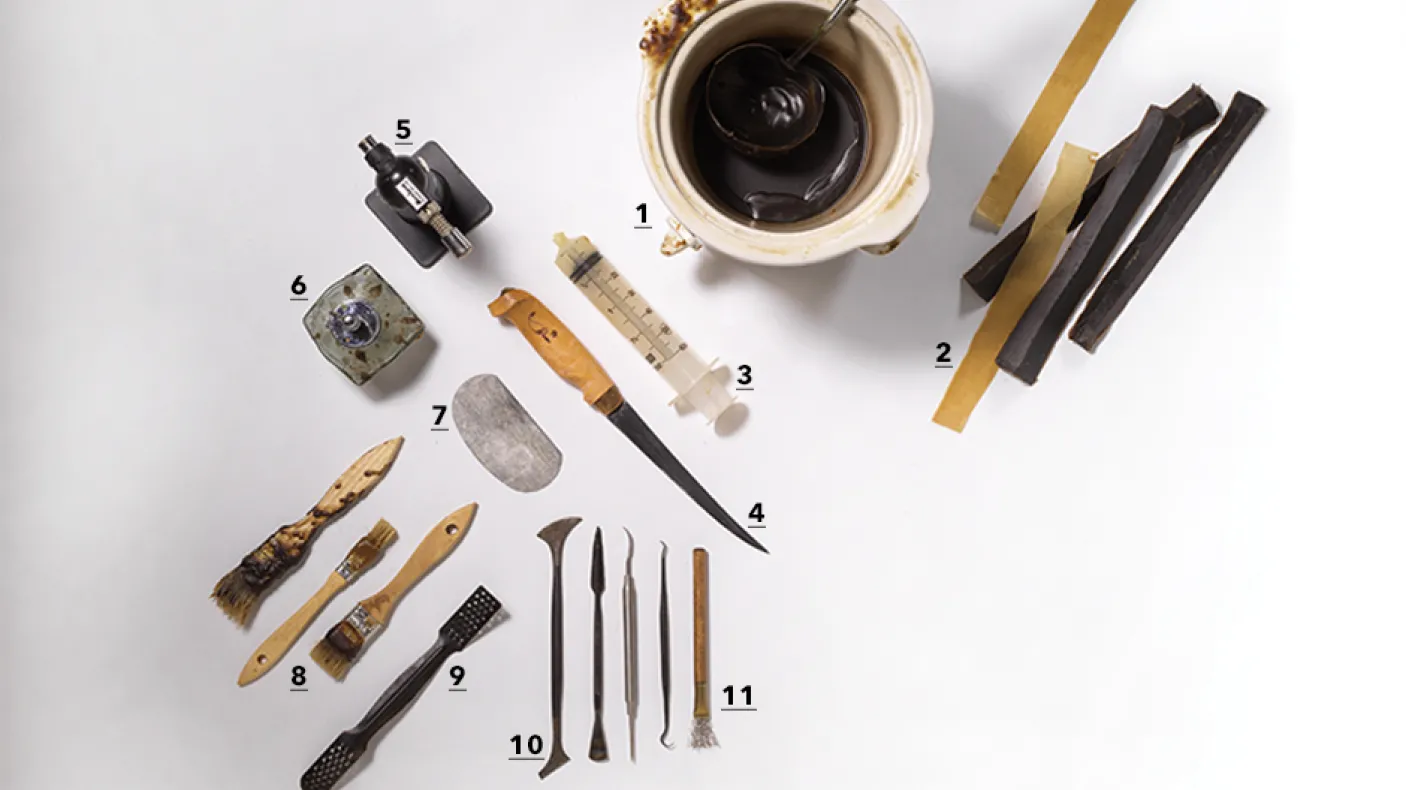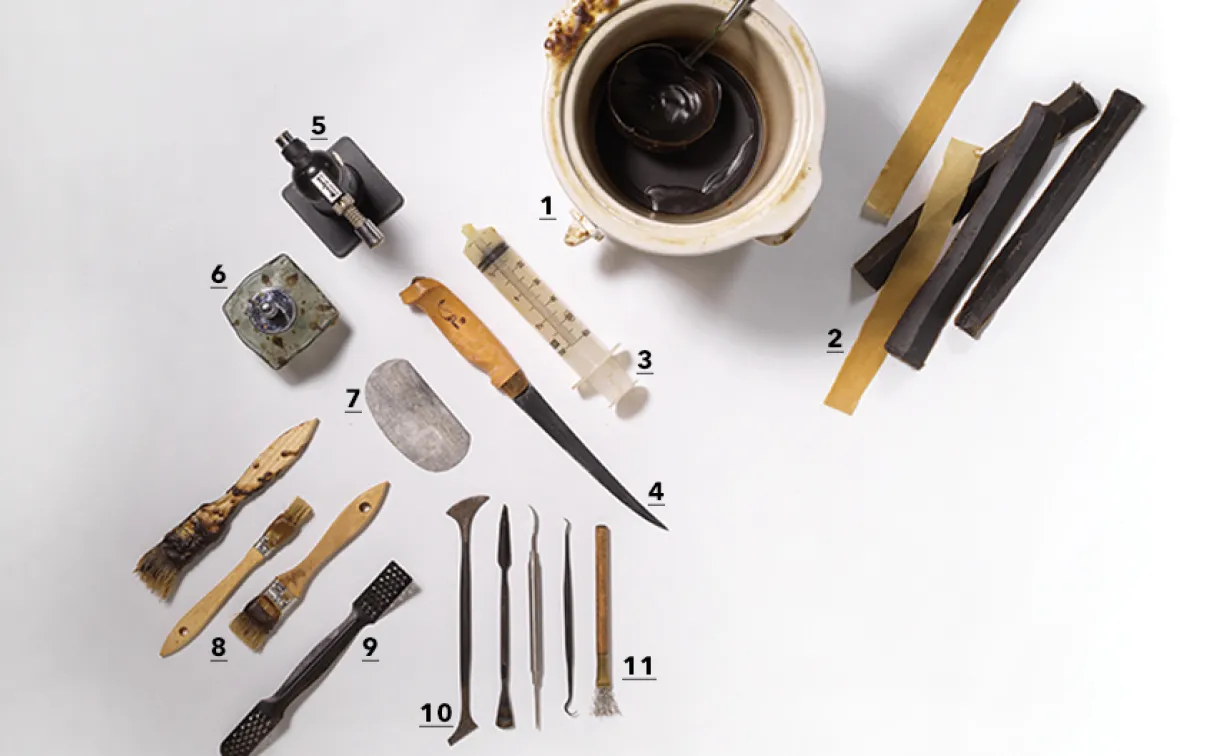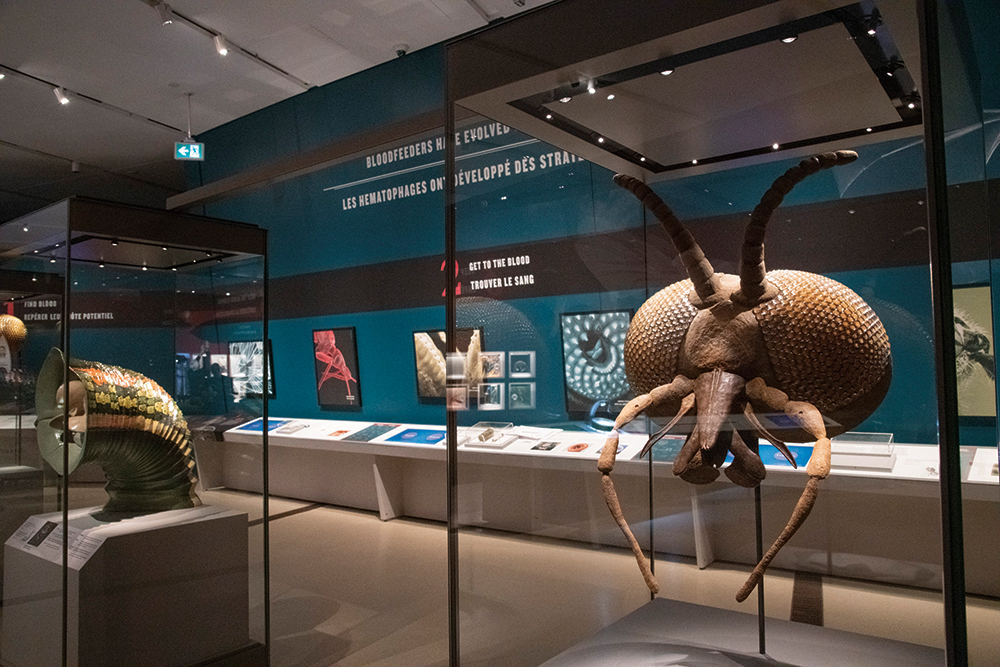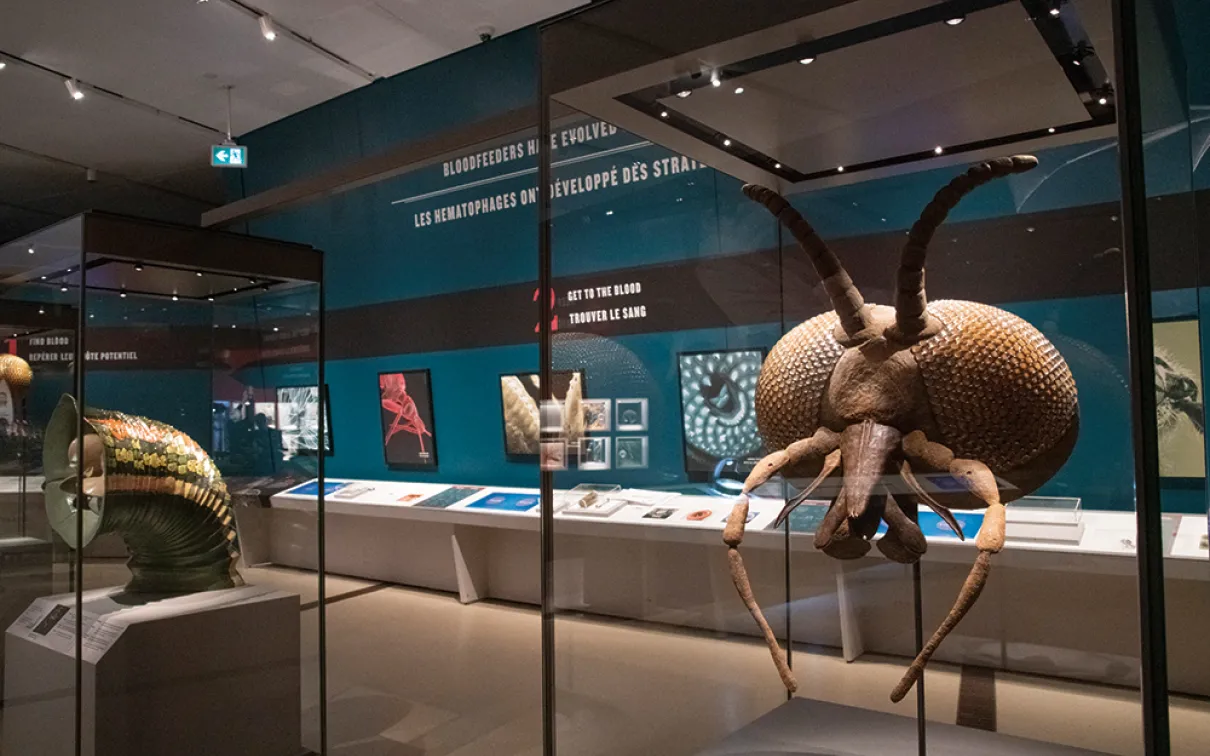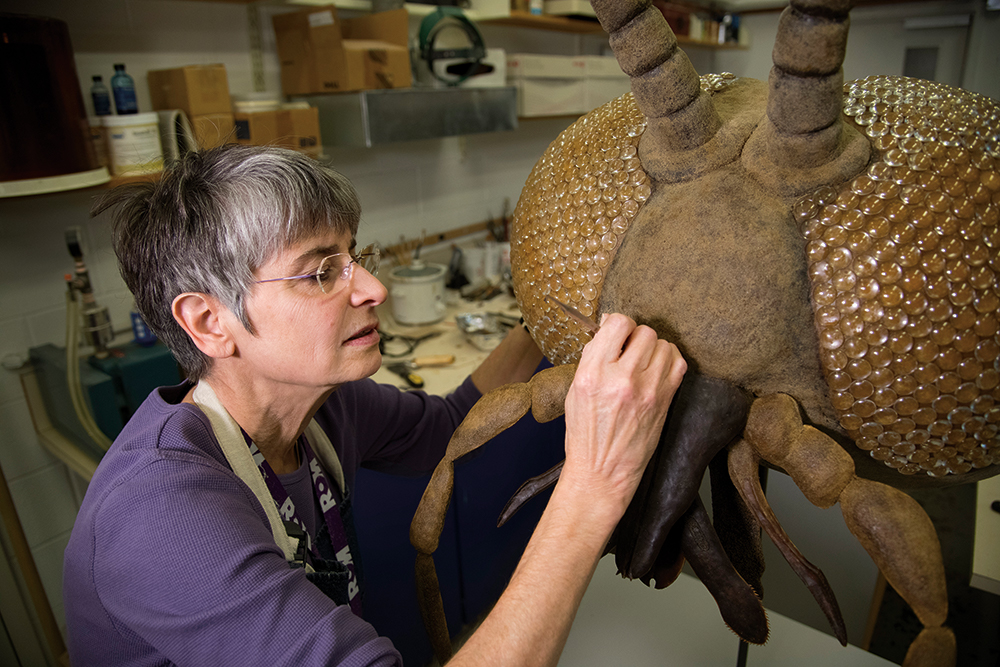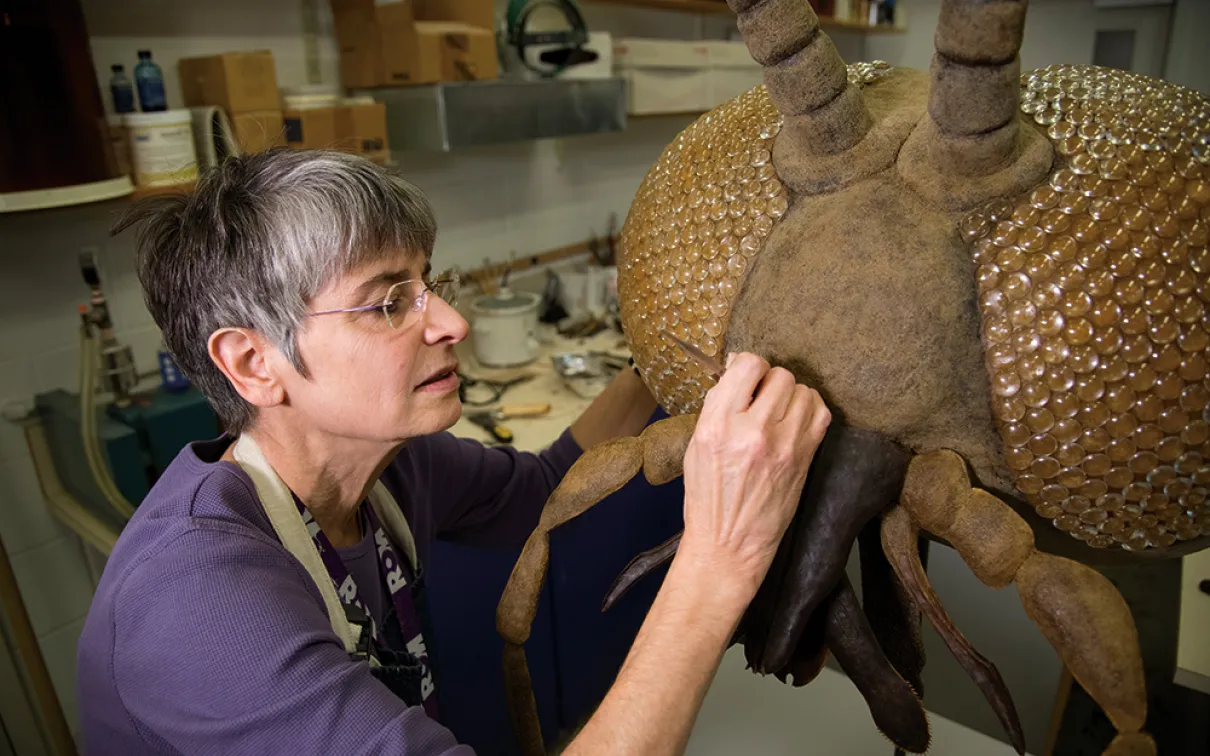Building Bloodsuckers
Using wax to create giant blackfly and mosquito models in Bloodsuckers: Legends to Leeches.
Published
Categories
Author
If you’ve been to the ROM’s recent exhibition Bloodsuckers
If you’ve been to the ROM’s recent exhibition Bloodsuckers: Legends to Leeches, you’ve encountered the enlarged models of the blackfly, leech, and mosquito. When I began this project, I knew that while the task was big, time was short. Each model began as a large carved Styrofoam shape. The leech was clad in papier mâché with multiple layers of paint, while the two insect heads, composed of many assembled parts, were finished with wax.
Wax is a superb modelling material, but getting the most from it is all about temperature control. While it is stable at room temperature, working with a range of higher temperatures allows for diverse visual and textural qualities. For instance, on the head of the blackfly, the labrum appears smooth, dark, and shiny because the wax has been compacted and burnished. In contrast, the antennae have been stippled with a brush dipped in melted wax, creating an almost furry effect.
Gallery 1
Modelling is an additive and subtractive process
Modelling is an additive and subtractive process. For the most part, the job entailed moving bits of wax around, using the variety of tools pictured here, day after day, to arrive at the final shape, colour, and texture. Next time you visit the exhibition, notice the remarkable range of effects that can all be achieved in wax, from the thin, sharp parts of the mosquito to the soft, compact forms of the blackfly.
Georgia Guenther
Georgia Guenther is an Exhibition Artist at the ROM.
